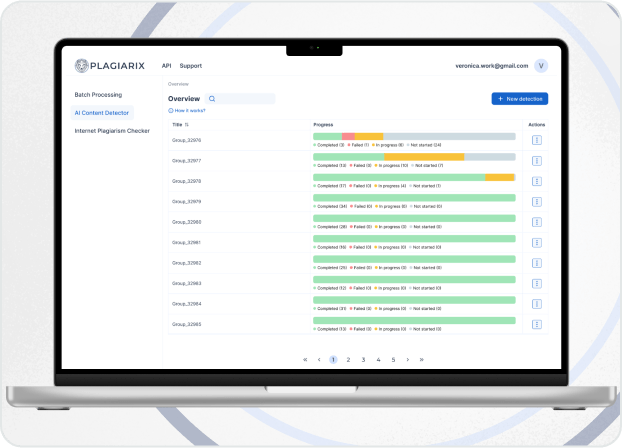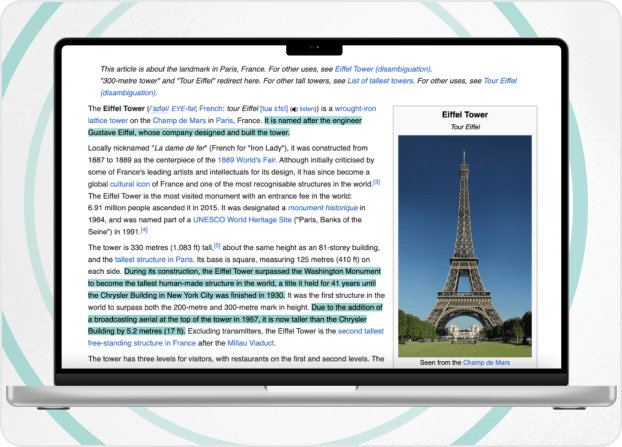
Expert’s Thoughts

"The fact that now there’re literally billions of mobile devices and millions of websites, programs and mobile applications available for everyone implies the greatest responsibility from business on user satisfaction issues. Through that, companies must pay close attention to mobile UX.
Silk Data prepared the following blogpost as a sort of guide that should make you familiar with the main principles of mobile design to follow in 2025."
Vera Bobich — UX/UI specialist at SilkData
Market Insights
In January 2025 Future Market Insights prepared a vast report on mobile design industry conditions, indicating that the mobile UX design services market has reached 1.39 billion USD in size by the beginning of the year. Furthermore, the report declares that the number will double by 2035, which demonstrates the annual growth rate of almost 7%.
What does it mean? It demonstrates that businesses all around the world are looking for specialists and teams who can work with mobile apps design and implement the best UX practices into their products.
This blogpost is in no small part dedicated to these practices, as well as some web and app design mistakes that negatively affect websites and applications attractiveness and convenience for users.
In other words, if your product isn’t optimized for a 6-inch screen, you’re not just risking a bad impression. You’re pushing your potential customers away, helping your competitors prosper.
But mobile-first design isn’t just about shrinking things down. It’s about rethinking how people interact with content when they’re holding a mobile device, tapping with thumbs, juggling distractions and expecting instant results.
Through that, Silk Data prepared the following blogpost on web and mobile development, considering the approach when the mobile version, being prior, influences product design.
What is Mobile UX Design and Why is It Important?
First, we should start with the terms’ definitions. What is exactly the mobile UX?
It is a subjective experience a user has with a mobile application or with a mobile version of a website or software. In other words, the mobile user experience describes user’s satisfaction and convenience while interacting with digital mobile product.
Through that, mobile UX design is one of the web and app design practices aimed at ensuring those satisfaction and convenience. In doing so, UX designers rely on various design methods and techniques while planning and developing the navigation and interface of mobile applications or optimizing desktop websites and apps for mobile.
Note. UX design is not only about using standard design tools and programs like Miro (for user journey mapping), Balsamiq (for sketching pages drafts) or Figma (for building high-fidelity prototypes and templates). It is sophisticated work that implies close collaboration between various specialists and teams.
In essence, good UX design and mobile UX designing start with user persona identification, which is the responsibility of marketers and analysts. Then, you should attract your target audience with content that will touch their pains, reflect their needs and work with their expectations. This is the field of content writers, whose work UX designers should properly ‘wrap’.
Furthermore, everything designers plan and build should align with apps or website functionality and permanently monitored and verified among real users. That’s why close cooperation with developers and QA engineers is needed.
In the end, the result should be checked and approved by the company’s executives and stakeholders.
The reality is that UX design for apps and websites, whether desktop or mobile, is no less important than the coding or quality assurance processes, as it implies combined dedication of various teams and experts.
That’s because user experience has been considered as important as their functionality. Literally, functionality and UX are intertwined, as fine-tuned functions influence user experience as well.
This is nothing new considering the fact highlighted in one of the Forbes surveys of 2024, that more than 50% of users see website design as a main factor in formulating their opinion on a business.
In the end, the main reason for UX design importance is that convenience and attractiveness are key factors that define mobile product’s success among the users.
Mobile App Design Tips
From the opening theoretical information, we go to real advice on how to properly work with mobile UX designing. All the tips are the accumulated experience of our team who have been working with hundreds of projects for the past dozens of years.

Mobile-First Approach
The best way not to worry about how your website or program will look on mobile is to put mobile in the first place from the very beginning.
This is called mobile-first approach, and this is a development practice where digital products and platforms are created for mobile devices first with further adapting to larger screens like tablets, laptops and PCs.
So, you put mobile devices as a priority at the first stages while scaling goes only when the product is fine-tuned for mobile.
It is not a new practice in UX design, as it has been used for many years because of the increased spread of mobile devices and businesses' concerns about it.
In one of our previous blogposts, we thoroughly discovered the essence of the mobile-first approach in UX design and highlighted most of its business benefits along with practices of its implementation.

Responsive and Convenient Design
Next tip of good mobile UX designing actually refers to designing.
There’s a great number of design practices and advice regarding colors and shades choice, blocks and elements positioning, navigation and menu structure building and many others. However, in this part we’ll focus on a few common mistakes that negatively affect the user experience.

Relying too much on visuals
One of the many mistakes made by businesses who start developing mobile apps or adapting websites for mobile is putting too many visuals on pages. You could have seen lots of website or apps examples with various background photos and videos which, frankly speaking, provide minimum value.
The problem is that trying to attract users with visuals, you forget about the main goal of every business digital product – to demonstrate your expertise in the industry and to make users go further, interacting with your product and seeking how to get more content or connect with you for goods and services.
Remember that your website or app is not a Disney movie or Power Point presentation, but a working tool that should bring new clients and raise your business’s popularity. From this perspective, a couple of informative abstracts and CTA buttons will work much better than high-quality video for pages backgrounds.

Putting extra work on users
One more mistake that even famous and prominent companies make with their websites and applications is forcing the users to perform extra actions.
In practice, the extra work can be implemented via a great variety of design solutions. For example, splash pages. It is a web design technique that implies that the user has to click or take any other action to open the homepage. It’s bad, because by doing so you confuse the user – they already entered your website or app, so why would they have to do anything to enter it once again.
In addition, splash pages negatively affect your website conversion. They have terrible SEO and just steal users’ time, decreasing the time of sessions spent on your website.
The same problems are applied for hidden navigation. There’re many websites that hide their navigation, making the user click or look for a special button to open it. In doing so websites chase minimalism, but in fact they put extra work on users.
However, mobile applications have no other choice, as the screen size hardly allows to put and properly display navigation row. Through that, you can see so-called hamburger menus , which display navigation after clicking on them.
The problem is that some companies create unusual hamburger menus in their attempts to be creative and stand out from their competitors. In reality, it only distracts users, as they already got used to standard hamburger menus icons, and different representations may negatively affect user experience.
The same applies to the practice of having a menu that consists of icons only. It’s a terrible idea, because you make users think about the meaning of each element of the menu, taking their time and building a bad user experience.
Despite seeming creative, all the above-mentioned solutions cause nothing but user irritation and lead to downfalls in websites and apps conversions.

No clear user paths
Next mistake refers to your mobile product’s navigation. Though the problem may not seem sufficient, reality says otherwise.
In June 2025 GoodFirms agency carried out a large survey on web design and UX in business. More than 200 web design agencies and freelance web designers were interviewed, and one of the main insights was that 61% of them believe bad navigation to be the main reason for visitors abandoning websites and other digital platforms.
In essence, no clear user paths means that your navigation can’t cope with its main purpose – to provide the visitor with clear and convenient app and website structure. A clear and convenient structure means that the user will easily switch between pages or functional modules and quickly find the information needed.
Within a single page scale, a good user path means a consistent and logical sequence of blocks and elements along with the structured narration of content presented.
Through that, if you can’t ensure the proper structure and navigation, the user easily gets confused and the UX dramatically suffers. The last fact is proved by another comprehensive survey by GoodFirms, which indicates that 99.2% of respondents see good UX as crucial factor for a startup app validation and market success.

Touch-Friendly Interfaces
Next thing is to consider designing for touch. In essence, it requires more than just making buttons bigger. Mobile users interact with mobile devices through their thumbs, and a well-optimized touch interface can mean the difference between effortless navigation and frustrating misclicks.
You should start by ensuring interactive elements, such as buttons, links and form fields are large enough for comfortable tapping. For example, Apple’s Human Interface Guidelines recommend a minimum target size of 44x44 pixels, while Google’s Material Design suggests at least 48x48dp. Spacing matters too, as placing critical actions too close together increases the risk of accidental taps, especially on smaller screens.
Beyond sizing, consider gesture-based interactions. Swiping, pinching, and long-presses should feel intuitive and consistent. Considering the platform is also vital, as iOS and Android have different expectations for navigation gestures.
Furthermore, in mobile UX design you should avoid overloading the screen with too many elements and potential touch targets. The best option is to prioritize primary actions and ‘cover’ secondary options into menus.
Finally, touch accessibility design should be tested on real devices. In the end, a touch-friendly interface isn’t just about avoiding mistakes, but about making interactions feel smooth, responsive and effortless.

Performance is Everything
Even the properly designed app means nothing if it can’t demonstrate suitable performance. Mobile users expect near-instant responses, and delays as short as a second can break immersion and increase abandonment rates.
Performance starts with optimizing assets. Heavy images, unoptimized SVGs and uncompressed videos bloat load times. You can use modern formats like WebP for images, implement lazy loading for off-screen content, and minimize HTTP requests by combining files where possible.
But performance isn’t just about speed; it’s also about perceived responsiveness. Even if an action takes time to process, the UI should acknowledge input immediately. Skeleton screens, loading spinners, and progress bars keep users informed, reducing frustration.
Conclusion
The explosive growth of mobile technology has transformed user expectations, as today seamless digital experiences aren’t just preferred but demanded. As the mobile UX design market expands, businesses face more challenges in mobile apps development .
This blogpost has mentioned some of the essential principles for 2025, from adopting a mobile-first development philosophy to avoiding pitfalls like excessive visuals and unclear navigation. We once again emphasize that features like touch-friendly interface and blazing-fast performance aren’t optional, but they are the bedrock of user retention. In addition, achieving excellent UX design for apps (and not only) requires more than theory. It demands collaboration across teams, rigorous testing, and a relentless focus on how real users interact with your product.
At Silk Data, we understand that exceptional UX is a strategic advantage. Whether refining an existing app or launching a new one, our expertise ensures your product doesn’t just function but also attracts and retains users. Don’t leave user satisfaction to chance and allow us to build experiences that resonate, convert and endure.
Our Solutions
We work in various directions, providing a vast range of IT and AI services. Moreover, working on any task, we’re able to provide you with products of different complexity and elaboration, including proof of concept, minimum viable product, or full product development.
























